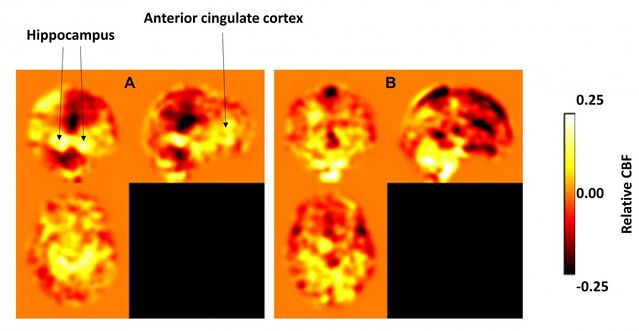Flow
The Brain-Boosting Benefits of Exercise and Cerebral Blood Flow
Aerobic workouts may improve memory by increasing blood flow to the brain.
Posted May 20, 2020 Reviewed by Gary Drevitch

Last week, researchers from the University of Calgary in Canada reported that older adults who started an aerobic exercise program and stuck with it for six months boosted cerebral blood flow (CBF) velocity, improved cerebrovascular regulation, and enhanced their cognition. The exercise-induced uptick in blood flow to the brain was associated with better executive functions and more robust verbal fluency.
These findings (Guadagni et al., 2020) were published on May 13 in the journal Neurology. (See "Want to Improve Cerebral Blood Flow to Your Brain? Start Exercising.")
This week, more state-of-the-art research (Thomas et al., 2020) puts the brain-boosting power of aerobic exercise and CBF in the spotlight. The latest findings on the brain benefits of cardio training by Binu Thomas and colleagues at the University of Texas Southwestern Medical Center were published on May 19 in the Journal of Alzheimer's Disease.
During this one-year study, the researchers found that sticking with an aerobic exercise program for 12 months boosts blood flow to the brain and can significantly improve neurocognitive functions in older adults at risk of dementia.
In comparison to a "gentle-stretching-only" control group, participants in the "aerobic exercise" group—who had an average age of 66.4 years and had shown signs of mild cognitive impairment before starting aerobic exercise training—improved their memory scores by 47 percent after one year of consistent cardio workouts.
How much exercise did they do? Study participants began their supervised aerobic exercise (AE) regimen by working out three times a week for 25-30 minutes. As the 12-month study progressed, their weekly "dose" (frequency/duration) of cardio training gradually increased in tandem with cardiorespiratory fitness (CRF) improvements.
The optimal dosage of AE associated with improved cerebrovascular regulation and better cognitive functions in the six-month study at the University of Calgary of 206 older adults with an average age of 66 appeared to be about 40 minutes of moderate-to-vigorous physical activity (MVPA) four times a week.
Although the neuroprotective benefits of aerobic exercise have been widely recognized in recent years, the exact mechanisms by which physical activity improves cognition and offsets cognitive decline have been hard to pin down. Increasingly, it appears that boosting cerebral blood flow via cardio workouts is a key reason that aerobic exercise is so good for the brain.
Interestingly, the memory improvements in participants with mild cognitive impairment in the one-year study by Thomas et al. were correlated with increases in CBF to the anterior cingulate cortex and adjacent prefrontal cortex. The authors speculate that the restorative benefits of aerobic exercise in Alzheimer's disease (AD) may be mediated by a redistribution of blood flow to AD-sensitive regions of the brain.

"We've shown that even when your memory starts to fade, you can still do something about it by adding aerobic exercise to your lifestyle. Perhaps we can one day develop a drug or procedure that safely targets blood flow into these brain regions," Binu Thomas, UT Southwestern neuroimaging researcher and first author of this study, said in a May 20 news release.
"[We're] just getting started with exploring the right combination of strategies to help prevent or delay symptoms of Alzheimer's disease. There's much more to understand about the brain and aging. Cerebral blood flow is a part of the puzzle, and we need to continue piecing it together," Thomas concluded. "But we've seen enough data to know that starting a fitness program can have lifelong benefits for our brains as well as our hearts."
DISCLAIMER: If you are currently leading a sedentary or inactive lifestyle, please use common sense and consult with your doctor before starting a new exercise program or doing vigorous cardio workouts such as high-intensity interval training (HIIT).
References
Binu P. Thomas, Takashi Tarumi, Min Sheng, Benjamin Tseng, Kyle B. Womack, Munro Cullum, Bart Rypma, Rong Zhang, Hanzhang Lu. "Brain Perfusion Change in Patients with Mild Cognitive Impairment After 12 Months of Aerobic Exercise Training." Journal of Alzheimer's Disease (First published: May 19, 2020) DOI: 10.3233/JAD-190977
Veronica Guadagni, Lauren L. Drogos, Amanda V. Tyndall, Margie H. Davenport, Todd J. Anderson, Gail A. Eskes, R. Stewart Longman, Michael D. Hill, David B. Hogan, Marc J. Poulin. "Aerobic Exercise Improves Cognition and Cerebrovascular Regulation in Older Adults" Neurology (First published: May 13, 2020) DOI: 10.1212/WNL.0000000000009478




